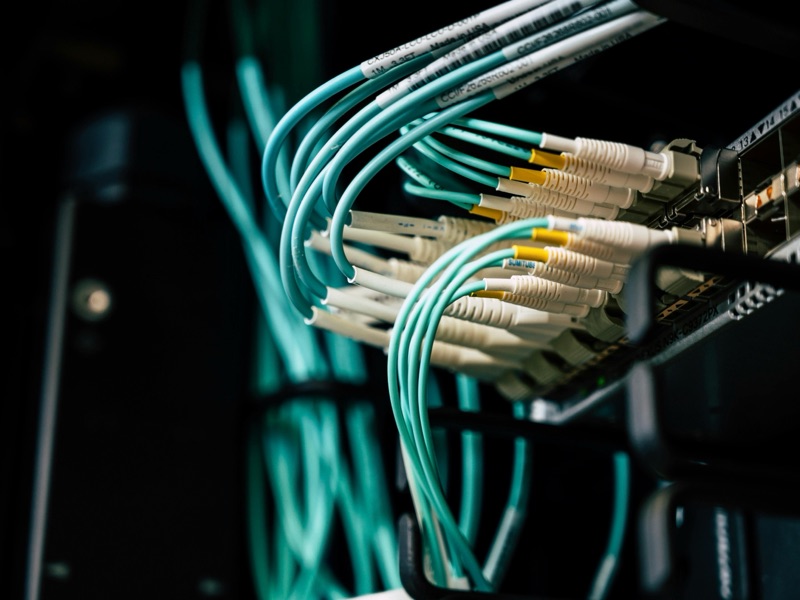When you send a message, stream a video, or load a website, you’re using a system called TCP/IP—even if you’ve never heard of it. It’s the silent protocol duo that has powered the internet for decades. But with all the new demands on modern networks—AI, streaming, remote work, gaming—is it still the most efficient way to get your data from point A to point B?
Let’s break it down: what is TCP/IP, how does it work, and does it still deserve its dominant role in the digital world?

What Is TCP/IP?
TCP/IP stands for Transmission Control Protocol/Internet Protocol. It’s a set of communication rules that computers follow to exchange data across networks, including the internet.
Think of it as a digital postal system. IP is responsible for addressing and routing the mail, making sure it gets to the right house. TCP, on the other hand, is the mail carrier that ensures the package is complete and delivered correctly—if anything gets lost, it goes back and retrieves it.
Here’s a quick summary of what each component does:
- IP (Internet Protocol): Handles addressing and routing. Every device has an IP address (like a mailing address), and IP ensures data reaches the correct location.
- TCP (Transmission Control Protocol): Ensures reliable delivery. It breaks the data into packets, numbers them, checks for errors, and reassembles them in order on the receiving end.
This protocol stack has been the foundation of the internet since the 1980s. It’s robust, scalable, and has survived everything from dial-up to fiber optic speeds.

How TCP/IP Works in Practice
Let’s say you’re sending an email:
- Your email gets broken into data packets.
- Each packet gets tagged with source and destination IP addresses.
- TCP adds headers to ensure packets arrive correctly and in order.
- The packets are routed through the internet using the IP system.
- At the receiving end, TCP checks each packet, requests missing ones if necessary, and reassembles the message.
This system is why you can stream Netflix, Zoom your coworkers, and play online games, often all at once.
But Is It Efficient?
Here’s where things get interesting. TCP/IP was designed in a different era, with very different requirements. And while it’s incredibly resilient and widely supported, it’s not always the most efficient.
Here are some of its limitations:
- Overhead: TCP includes a lot of checks and controls to ensure reliability. That’s great for emails and file transfers, but it introduces latency for real-time applications like gaming or video calls.
- Congestion Control: TCP tries to avoid overloading the network by slowing down when it detects congestion. But that behavior can cause performance dips, especially on modern high-speed links or wireless networks.
- Not Ideal for Real-Time Data: Applications like VoIP, video conferencing, and online gaming often use UDP (User Datagram Protocol) instead of TCP. UDP skips error-checking and retransmissions, which reduces delay but also increases the chance of dropped packets.
- Scalability Pressure: The number of devices online has exploded, and TCP/IP wasn’t designed with billions of IoT sensors, smartphones, and smart fridges in mind. It works, but with duct-tape-level patching (like NAT and IPv6 adoption).
What Are the Alternatives?
TCP/IP isn’t going away anytime soon, but that hasn’t stopped researchers and engineers from exploring alternatives:
- QUIC: Developed by Google, QUIC is a modern protocol that combines the reliability of TCP with the speed and efficiency of UDP. It’s used in HTTP/3 and already powers many Google and YouTube services.
- UDP-based Protocols: Many games and real-time apps use UDP with their own error-handling logic, allowing for better responsiveness.
- Named Data Networking (NDN): A new internet architecture that shifts focus from “where” data is stored (IP addresses) to “what” the data is. Still largely experimental.
- Multipath TCP (MPTCP): An upgrade that allows devices (especially mobile) to use multiple network interfaces simultaneously (like Wi-Fi and 4G) to increase reliability and speed.

Conclusion: Built to Last, but Not Forever
TCP/IP is a technological triumph—resilient, universal, and foundational. It turned the internet into the world-spanning utility it is today. But it’s also showing its age. In an era demanding ultra-low latency, massive scalability, and real-time communication, it’s being stretched to its limits.
Still, its adaptability is impressive. With ongoing innovations like HTTP/3, QUIC, and smart layering, TCP/IP continues to evolve. Is it the most efficient method? Not always. But it’s still the most reliable, supported, and interoperable. Until something truly revolutionary—and globally adopted—comes along, TCP/IP will keep running the show behind the scenes.
Your devices may never thank it, but every time a cat video plays without buffering, you probably should.
Comments
Post a Comment